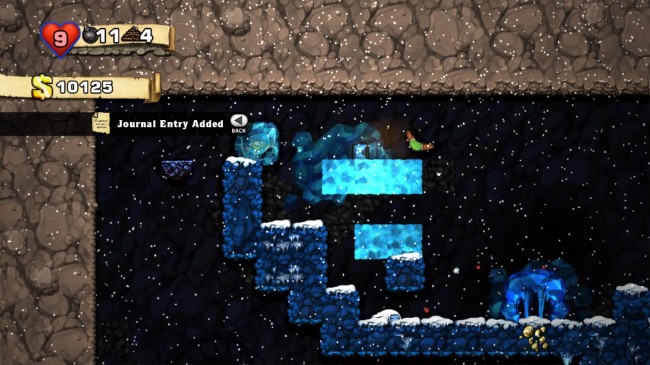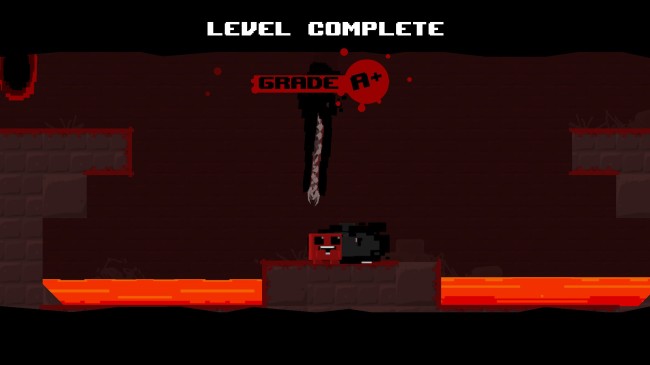Theme Party: Repetitive Stress Injury
Difficulty is a strange topic in games. It’s one of the more polarizing things to bring up in relation to any single experience, and it has a way of sort of stratifying gamers into specific brackets of skill and thirst for challenge. In recent times especially, extreme difficulty in a game has become something of a back of the box selling point, with games specifically tailoring their marketing push toward those who wish only for an unholy asswhooping to be delivered to them.
But all difficulty is not created equal, and all forms of flexibility are not an inherently positive modifier. In Theme Party this week, then, I’ll be taking a break from the narrative analysis that normally shows up here in order to look at what makes extreme difficulty work, and why some experiences produce frustration while others produce ambition and a perfect feeling of accomplishment on success.
So what are the techniques that work?
MAKING IT VARIED
This is the roguelike answer and the reason why something like Spelunky is so bloody compelling. As I said in my Spelunky review, this is the concept of difficulty as a shifting thing, where the game is attempting to be something of a trainer for the player. Whereas Super Mario Bros. 3 commands me to overcome specific challenges, the only challenge Spelunky consistently puts in front of me is the challenge of getting better at Spelunky.
But really, it all comes down to the way we treat death in these games, and the answer to death in the roguelike family is to make the return experience wholly different. No two levels are the same, and so death ceases to feel like a reversion or an undoing of progress. Rather, it turns into a shifting thing, and you feel like you’re playing new levels even though technically you’re being made to retread sections of the game you’ve already “completed” in terms of pure numerical progression.
This is how the permadeath genre gets away with being so extremely harsh when it comes to how it treats loss on death. A purely linear, preset game like Super Mario Bros. would have a harder time keeping players if you could lose all of your progress the second you were killed. When the levels are shifting constantly, though, even death creates a new experience, and so the redo on the levels doesn’t feel like a redo, it feels like making progress in a different direction. The frustration, then, is relieved as a result. Only the self improvement remains.
The other positive aspect of this technique is that it creates such a strong culture of storytelling behind the experiences each player has in the randomly generated worlds. Everyone who’s ever played Spelunky or Dungeons of Dredmor has their own war stories and tales of gruesome deaths. We all have times where we were killed by spikes on 1-1 or didn’t get the item we needed off the bat or a strategy failed spectacularly. It’s these stories of grandiose failure and death that add so much charm to these games, because everyone’s shared experiences aren’t fully shared. I can tell you about the time I died in the first level of Super Mario World and you’ll know exactly what I’m talking about, but it doesn’t interest you as much because it’s just my own failure to conquer a specific level, the story of which you are already familiar with. My death on 1-1 of Spelunky, however, grants me the ability to do all of the necessary things for proper storytelling; set a scene, describe the level setup, describe how I was feeling, approaching it, how it was different from other runs, etc. The game becomes the campfire around which we tell our harrowing ghost stories of runs past.
There are downsides to this sort of difficulty, though. If you’re the type of person who really wants a feeling of conquering a specific challenge, then it can be frustrating to never get a second chance to take a crack at anything in these games. The shifting level means whatever killed you or caused your failure is gone in the next run, and it can be hard to capture that feeling of killing a hated foe or overcoming a particularly hard jump. On top of that, there is always some level of difficulty variation across different instances of the game world; some runs are always going to be harder than others, which means that triumph may be a function of something other than player skill in some cases. Still, if these flaws are too damaging for you, there are other techiques, such as:
MAKING IT FAST
This is a technique that should honestly be used in tandem with any of the others. The idea behind making it fast is the concept that once failure has occurred, reintegration into the game’s challenge should be virtually instantaneous. The perfect example here, then, is Super Meat Boy.
In Super Meat Boy, the failure of death is felt for only a brief blip before plunging back into the level, and it’s what makes death so much more tolerable in the experience. The player doesn’t have nearly as much time to get frustrated or lament their failure when they are instantly placed back into the fray after death. If I miss the baseball on my swing, the best way to feel better is to take another damn swing, and Meat Boy understands this. Another fantastic example of this in play is Hotline Miami, where the unrelenting pace of the game’s carnage is never really stopped by the player’s death. Being able to essentially throw your carcass at a challenge over and over again until you brute force it to death is much less painful when the barrier between one life and the next is virtually nonexistent.
The other upside to this is that in specific titles like Meat Boy and Hotline Miami it can go a long way towards contributing to those games’ general feel of smoothness, responsiveness, and speed. Super Meat Boy is a game in which you almost never miss a beat in the action; only very very seldomly are there scenarios that are not immediately responsive tests of your ability. Hotline Miami is the same way; you make a plan, you execute, you fail, all in the span of about eight seconds. Every one of those eight seconds is a perfect function of your own input. Death is no different, and it really drives home the feeling that you are the absolute master of your own success and failure. That honing of skill, the demandingness of that level of mechanical responsiveness, is what makes those games work. Difficulty, then, is what flows naturally from that, and the speed of resumption is what delays the build of frustration from failure.
The downside here is that the experience needs to be one where you’re not going to disorient the player by instantly throwing them back into the mix upon death. The two games mentioned above feature very static challenges, and you know exactly where you’re going to stand upon respawning. Dumping a super fast respawn into say, Spelunky would be disorienting because the level would have changed and some new factors would be in play. Some games may also delay this process naturally by asking the player for some decisions on respawn; again, Spelunky players have the choice between a fast restart of the same type as before, or a slower restart involving returning and perhaps selecting a different starting point. All of these things may be necessary roadblocks in some experiences, and so the absolute speed of respawn present in Super Meat Boy and Hotline Miami may not be an ideal solution.
MAKING IT SATISFYING
This is the tricky one: the Dark Souls technique. In this scenario, respawning isn’t an instant reconfrontation of whatever it as that killed you; rather, death sets you back to a checkpoint, which may mean having to retread previous challenges in order to come back to the part that spelled your doom. Compared to the two techniques above, this may seem like something of a misstep; isn’t frustration the result of having to retread?
Not when it’s done right, and the most obvious example of doing it right is in Dark Souls. Dark Souls requires the player to respawn at certain bonfire checkpoints on death, which causes all of the enemies in the path and challenges along the way to reset themselves. What keeps it from being tedious, however, is that oftentimes these challenges remain compelling, and create a sort of hidden metric of progress as you go through. You may have conquered this set of enemies before, but you took damage then. Can you do it without getting hit now, in order to have more health for your later challenge? Perfection of execution is always requested, if not demanded, and as a result the fact that you have to retread parts of the game on death is what makes death meaningful; the challenges never become droll.
It’s also what makes death something to be afraid of, which is part of the underlying conceptual atmosphere of Dark Souls. You don’t want to die because you don’t want to go all the way back to that bonfire and deal with all these enemies again, so every new corner is frightening because of the unknown possibility for death. It keeps you cautious and hesitant because of the cost involved, and Dark Souls is a game that’s at its best when the player is apprehensively stepping at inch at a time through a new area with a shield raised. This tension eliminates the viability of random redesigns or a superfast respawn/confrontation mechanic for approaching challenges, because without that cost and pain associated with dying, the fear of what’s around the corner wouldn’t be as real.
Of course, the problem with this is that it does fall apart in some instances. Boss fight runs can be especially tedious when all the player wants to do is take another crack at a difficult fight, and doesn’t care about the trash along the way or what challenge it might present. The monsters en route to a boss door may be therapeutic to smash after your crushing defeat, but beyond that, they do somewhat damage the player’s ability to quickly return to whatever it is they’re facing.
Difficulty is a complicated thing, and the above are only a small sample of the various ways to manage it; there are also concepts like varying difficulty settings, adaptive difficulty, forgiving checkpoint/life mechanics, among other things. The key takeaway here, though, is balance. Difficulty needs to represent a balance between the player’s frustration at failure and drive and satisfaction regarding success. The above represent successful strategies for implementing that balance, but ultimately, it’s more up to the player to find the difficulty level that suits them, and the developers to provide variety of experience. We may all have varying levels of masochism, but in gaming, there’s something for everyone out there.



Recent Comments